Award of Excellence
Metropolitan Paradise, The Struggle for Nature in the City: Philadelphia's Wissahickon Valley, 1620-2020
Carol Franklin, FASLA, and David Contosta, PhD
Morris Arboretum of the University of Pennsylvania
Saint Joseph's University Press
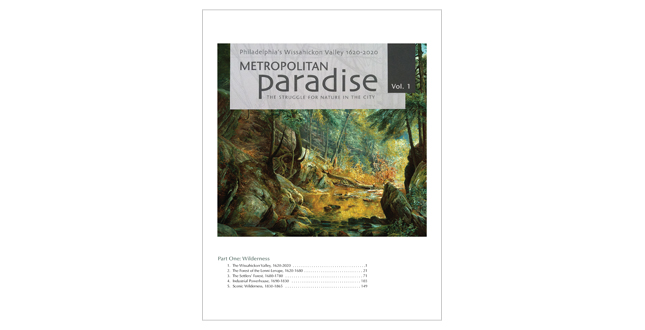
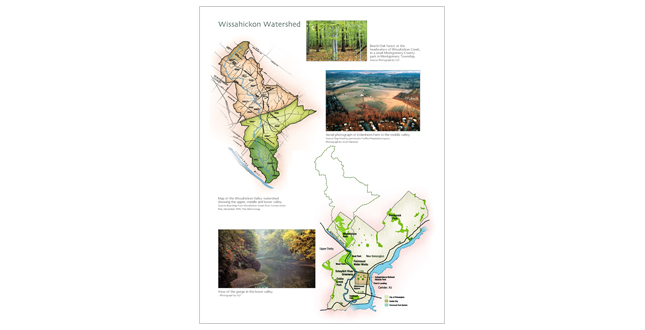
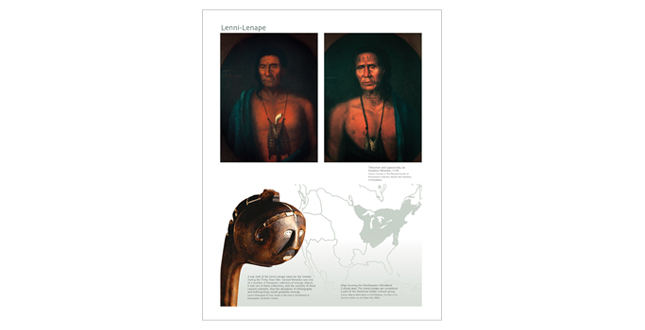
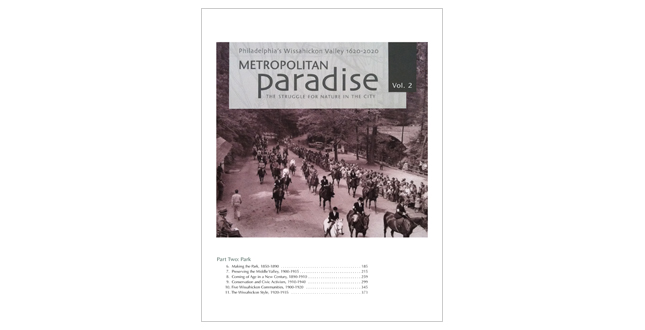
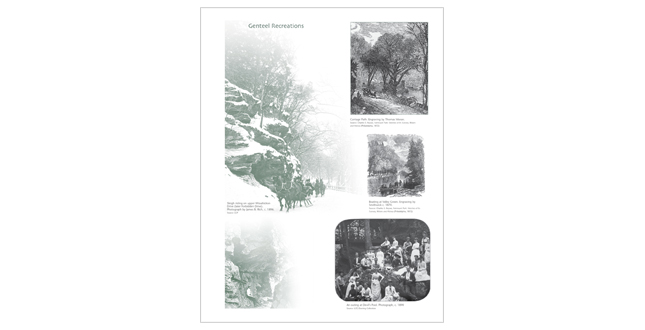
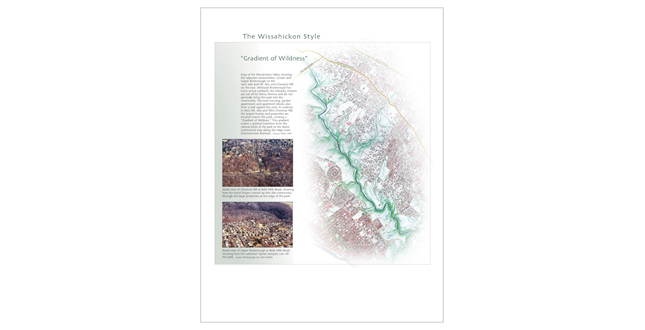 Close Me!
Close Me!The Wissahickon Style: "Gradient of Wildness"
Download Hi-Res ImagePhoto: Carol Franklin and David Contosta
Photo 6 of 15
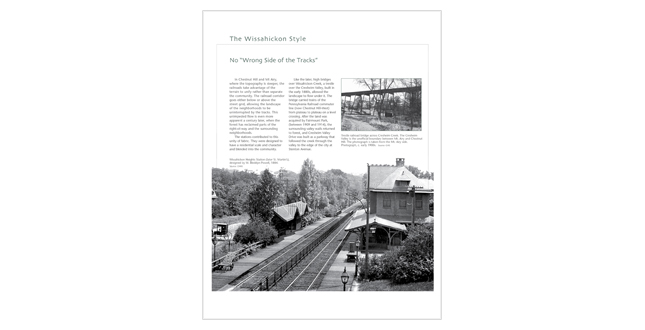 Close Me!
Close Me!The Wissahickon Style: No "Wrong Side of the Tracks"
Download Hi-Res ImagePhoto: Carol Franklin and David Contosta
Photo 7 of 15
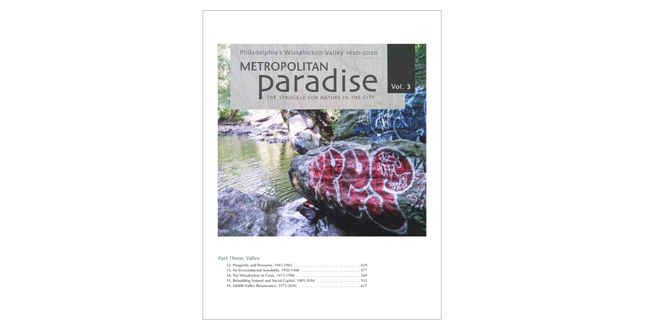
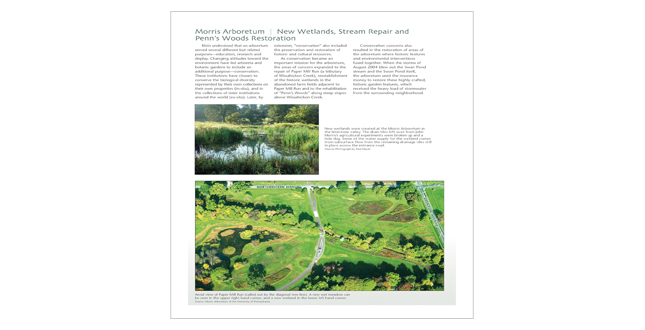 Close Me!
Close Me!Morris Arboretum: New Wetlands, Stream Repair and Penn's Woods Restoration
Download Hi-Res ImagePhoto: Carol Franklin and David Contosta
Photo 9 of 15
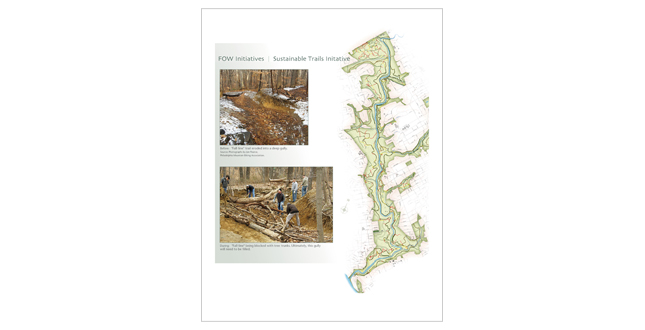 Close Me!
Close Me!FOW Initiatives: Sustainable Trails Initiative
Download Hi-Res ImagePhoto: Carol Franklin and David Contosta
Photo 10 of 15
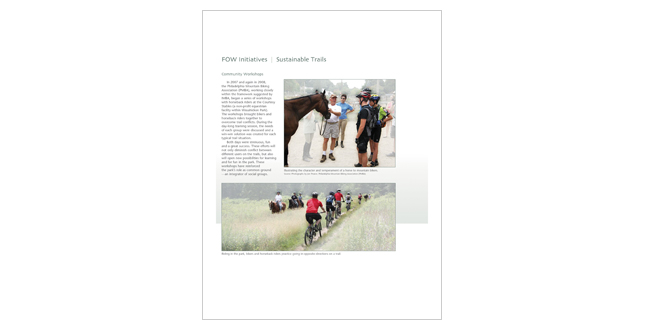 Close Me!
Close Me!FOW Initiatives: Sustainable Trails
Download Hi-Res ImagePhoto: Carol Franklin and David Contosta
Photo 11 of 15
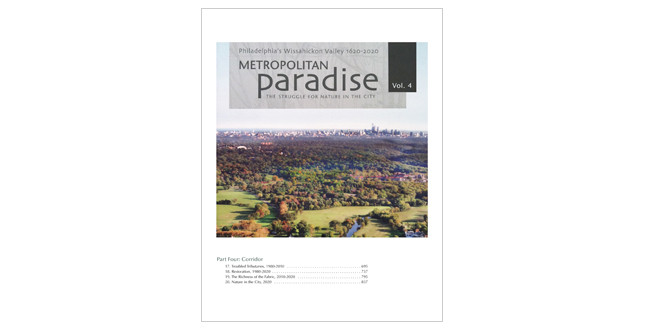
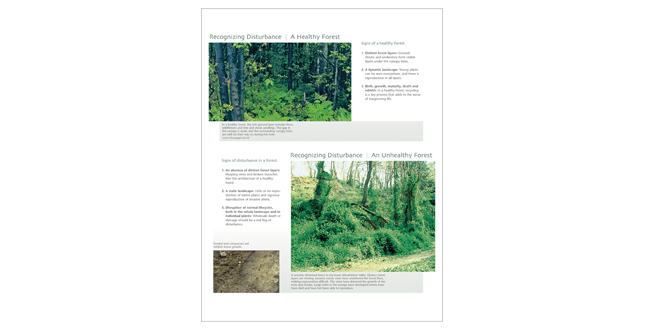 Close Me!
Close Me!Above: Recognizing Disturbance: A Health Forest. Below: Recognizing Disturbance: An Unhealthy Forest
Download Hi-Res ImagePhoto: Carol Franklin and David Contosta
Photo 13 of 15
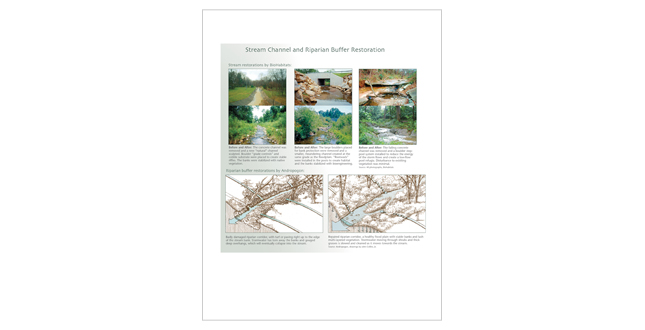 Close Me!
Close Me!Stream Channel and Riparian Buffer Restoration
Download Hi-Res ImagePhoto: Carol Franklin and David Contosta
Photo 14 of 15
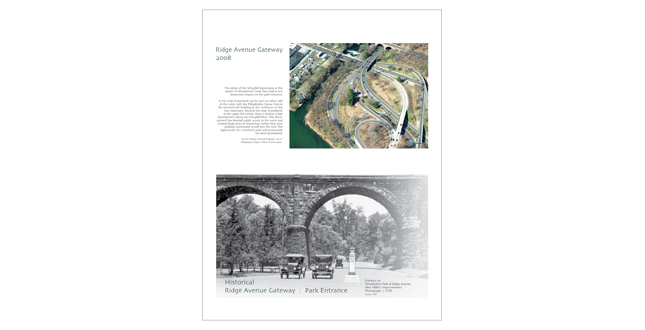 Close Me!
Close Me!Above: Ridge Avenue Gateway 2008. Below: Historical Ridge Avenue Gateway: Park Entrance
Download Hi-Res ImagePhoto: Carol Franklin and David Contosta
Photo 15 of 15
Project Statement
Philadelphia’s Wissahickon Valley is a microcosm of changes in the American landscape over the past 400 years. The lessons of its history, present treatment and future possibilities are both universal and unique. This book is the story of the struggle to establish and maintain connected natural systems in one metropolitan area. The lessons learned from the treatment of this valley are offered as examples for the many parallel problems in the world’s cities.
Project Narrative
Introduction
—2011 Professional Awards Jury
Sacred to the Lenni-Lenape and to many early Europeans who settled in the area, the Wissahickon Valley has all the elements of “paradise” recognized in many cultures – the dramatic gorge with high cliffs, twisted rocks, dark hemlocks, sparkling water and the bountiful, rolling terrain directly to the north, beyond the city boundaries. Ironically, this paradise is part of a large, old North American urban region, suffering from all the troubles of the modern metropolis.
Intended purpose
Today, we are seeing the explosion of cities and their metamorphosis into complex, densely packed, multi-dimensional regional organisms. With seven billion people now on the planet and a projected nine billion in 30 years—almost everyone will be living in a megalopolis. The 19th century boundaries between nature and the city must be dissolved to make these conurbations livable. Current scientific insights and technological advances make a new fusion possible and allow us to bring healthy, natural systems back into the fabric of the city.
Impact and effectiveness
Philadelphia’s Wissahickon Valley provides an unfolding, narrative of one region’s struggle to establish and maintain connected natural systems (of adequate size) within a densely developed, metropolitan area. The preservation and restoration of this valley is offered as model for urban regions around the world. As Jaime Lerner, former mayor of the City of Curitiba in Brazil, has said, “the city is not the problem, the city is the solution.” The authors have combined insights from several different disciplines to create this book. One author is a cultural and intellectual historian who has written widely on the American small town, the other is a landscape architect with a foot in both camps of ecological design and restoration and cultural landscape preservation. We have come to see this valley as a microcosm of the changes in the American Landscape over the past four hundred years, and believe that the lessons of its history, present treatment and creative future, are both universal and unique. This book is a journey into where we live locally, and by extension, into what we can do to resolve the crises of a natural world that is collapsing all around us.
Audience, Messages
Preserved by a series of decisions both intentional and accidental, the lower and middle Wissahickon Valley has been shaped by the central paradigms of succeeding eras. Recognizing, analyzing and incorporating each accreted layer is the first step in creating solutions that grow out of the best of the past and build new value for a future that is increasingly fluid and refocused on new and different lifestyles. Each chapter concentrates on a significant period of transformation, highlighting ownership, key decisions, fulcrums of change and the physical pattern modified by these different “world views.”
The audience, like the book, is seen as both universal and unique. Special to devoted advocates, who know and love the Wissahickon Valley, but also meaningful to political entities, planning commissions, conservation groups, local institutions, governmental agencies, elected officials, design professionals, educators, residents, historians and valley visitors.
The Wissahickon Valley is the result of a unique blend of landscape, social and political realities, land management and lifestyle, and the consequence of the choices of a number of proprietors with very different goals, over time. To reflect these proprietors, their choices and the impact of these choices on the landscape, this book is divided into four volumes: Wilderness—Park— Valley—Corridor.
Wilderness
The first volume, “Wilderness,” covers the period from the coming of the European settlers through the agrarian and early industrial periods. This volume begins by exploring the radical changes that took place in the Wissahickon Valley as a consequence of European commercial exploitation and extensive settlement of this area. By the early 19th century, most of the land had been cleared for pasture and crops, changing a “closed” landscape to an “open” one. Early industry harnessed waterpower and created an extensive infrastructure of mill complexes, ponds, dams, bridges and roads, further reducing and reshaping forests. Volume # 1 ends with the growing perception in the new nation of the value of nature and in the recognition of the Wissahickon Gorge as “awesome” scenery.” This growing consciousness of the “uplifting” qualities of nature culminates in the creation of the park and the removal of most traces of industrial activity.
Park
Volume #2 concentrates on the creation and elaboration of preserved open space in the lower and middle valley, made possible by the industrial wealth of the region. Philadelphia was one of the first major cities in the United States to establish a municipal park system and the first city to created this system as part of an interconnected network of stream valleys.
Valley
Volume #3 covers the period when people began to see the open space network as belonging, not only to the park, but also to a larger environmental system that encompassed the entire Wissahickon watershed. In the course of examining the current park and suburban open space problems, the book proposes a new administrative entity. This regional entity would fund, coordinate and manage the corridor in both city and suburbs.
Corridor
Volume #4 examines the political fragmentation of Pennsylvania’s administrative units – townships, boroughs and municipalities seeing the many of the problems of the Wissahickon Corridor, resulting from a lack of coordination among these entities, as well as from the historic failure to see the watershed as a system. This volume documents the remarkable efforts of many public, private and semi-private organizations to solve a multitude of problems—from the burial of tributaries, to the poor condition of park trails. Volume #4 ends with a vision of a multi-layered public open space system along the main stem of the creek.
Purpose
This “corridor” which stretches from City Hall Courtyard to the suburbs beyond city boundaries, would fuse together—in space and time—both the built and natural fabrics. It would have both a physical and a programmatic connectivity that goes beyond conventional ideas of “park” as a “locational” or “recreational” amenity. It would integrate natural lands with cultural history and ecological restoration, as well as industrial, commercial and institutional activities—coupling work and play. It is hoped that a new form of governance will allow this remarkable corridor to play a full role as the spiritual and symbolic heart of a vibrant metropolitan community—a place that keeps both city and suburbs “alive” in the deepest meaning of the word.
Distribution Method
Bookstores of non-profit organizations, small, personally owned stores with an interest in the topic, as well as the necessary Amazon.
Circulation/Distribution
3000 copies first printing. 1500 sold in the first 3 months after publication
Project Resources
Co-Authors:
Carol Franklin, FASLA and David Contosta, PhD
Sponsored by the Morris Arboretum of the University of Pennsylvania
And made possible by generous gifts from numerous individual donors, local non-profits and foundations.
We offer heartfelt thanks to those for continuing leadership and support that went way beyond our expectations
Thanks to the people who provided the broad intellectual foundations on which this book is based.
We particularly want to thank the people who gave us interviews and who read and critiqued all or part of the manuscript.
Thanks to the many past and present board members of the Friends of the Wissahickon.
Above all, we are grateful to those who gave us special inspiration and encouragement.






